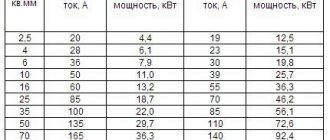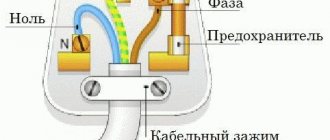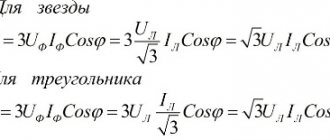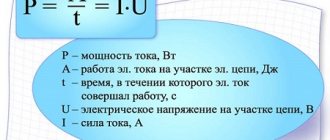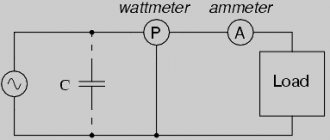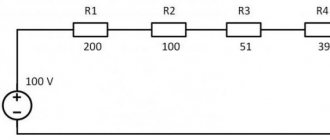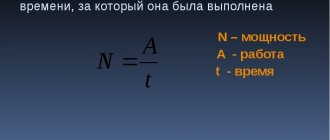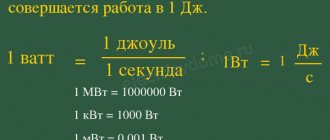What is a three-phase network in electricity
The multiphase AC electrical network was created thanks to the American scientist N. Tesla. In Russia, scientist M. Dolivo-Dobrovolsky developed and promoted the widespread implementation of a three-phase electrical network.
Connecting source and consumers
Three phases of alternating current are supplied, which are equal in amplitude and shifted relative to each other by 120°. The phases can be connected to each other in several ways. The most common of them are “star” and “triangle”.
In the first case, they have one common wire. With this use case, it becomes possible to supply line or phase voltage. In an apartment, the first is 380 V, the second is 220 V. The common wire is usually connected to ground, although there are connection diagrams in which this is not the case.
For your information! With a delta connection, each phase output is connected to one output of the other phase.
Three phase transmission line
Three-phase network power calculation
> Theory > Calculation of three-phase network power
Single-phase and three-phase electrical networks are most widespread in our country. Network companies are striving to develop three-phase distribution systems, because You can always make single-phase ones out of them to power private apartments and houses. However, recently private owners have also been striving to obtain three-phase power supply for their residential premises.
Three-phase electrical network
How to find out your scheme
The distribution network coming to consumers' apartments and houses is today divided approximately equally into: single-phase and three-phase. As for industry, “three-phase” is always used there. On the streets of cities and villages you can only see three-phase networks, although they can be divided into single-phase ones. This usually happens for consumers with an authorized power of less than 10,000 W.
Properties of a three-phase network
The use of three-phase power supply has gained wide popularity for the following reasons:
- In this way, losses during transmission of electricity over long distances are minimized;
- three-phase circuits require fewer parts and materials for implementation compared to single-phase ones;
- It is possible to provide 380 V or 220 V power in the network.
Note! Three-phase voltage is often used to power asynchronous motors, some heating devices, and to operate powerful devices.
Four power wires
Online calculation of network power by current
This online calculator allows you to calculate the power (active, reactive and apparent) of single-phase and three-phase networks by current and voltage. (If necessary, you can also use our network current calculator ).
Network power is determined by the formulas:
P=U*I*cosφ - for single-phase networks;
P=√3*U*I*cosφ - for three-phase networks;
- U is the voltage of the network (electrical appliance);
- I — network current (electrical appliance);
- cosφ - power factor.
Instructions for using the current power calculator:
- Select the type of electrical network: single-phase or three-phase .
- We enter the value of the current in one of the following quantities, milliamps, amperes, kiloamps, and then indicate in which particular value this value was entered.
- We enter the network voltage, as a rule it is 220 Volts - for a single-phase network , or 380 Volts - for a three-phase network , however, in the calculator it is possible to specify any voltage value, after which, as in the previous case, we indicate in what exact value this value was entered.
- We enter the value of the power factor; in the absence of data, it is accepted from 0.95 to 1 - for household electrical networks, or from 0.75 to 0.85 - for industrial electrical networks. When calculating the power of household electrical networks and electrical appliances, the cosφ value can be neglected; in this case, its value is taken equal to 1.
- Click the “CALCULATE” button
As a result of the calculation, we obtain the value of all network capacities in two quantities:
- Active power - in Watts (W) and kilowatts (kW).
- Reactive power - in Volt-amperes reactive (VAr) and Kilovolt-amperes reactive (kVAR)
- Apparent power - in volt-amperes (VA) and kilovolt-amperes (kVA)
Note: if necessary, calculate the electrical power. engine you need to use this calculator.
Did you find this online calculator useful? Or maybe you still have questions ? Write to us in the comments!
Didn’t find an article on the website on a topic that interests you regarding electrical engineering? Write to us here. We will definitely answer you.
Source
What is the current strength of a three-phase network
In practice, the power of an electrical appliance is often a known quantity. Since in most cases a voltage of 220 V is used for power supply, all the necessary data is available to calculate the current strength. This value is important to compare it with the maximum permissible for the wires, sockets and extension cords used.
You may be interested in 1 sq. - how many watts is it?
Important! Excessive current may blow fuses or damage the extension cord you are using.
Three-phase system with neutral
To determine the current strength, you can use the power formula: P = sq. root(3) * U(l) * I(l) * cos(“phi”).
Here you can use known data:
- P is the power of the electrical appliance, known from its operating instructions;
- U(l). In most cases, we are talking about a voltage of 220 V (for devices with three-phase power supply, this value will be equal to 380 V).
The meaning and formula for cos (“phi”) are usually not known exactly. They are taken from the technical data sheet of the device or refer to reference books for this information. As a rule, for certain types of devices this value is known. For example, it is close to 1 for heating devices, and for electric motors it is 0.7-0.9.
Thus, based on the above formula, the current strength can be calculated based on known data.
Device for measuring power - wattmeter
Formula for calculating the power of electric current
According to Ohm's law, current (I) is proportional to voltage (U) and inversely proportional to resistance (R), and power (P) is calculated as the product of voltage and current. Based on this, the current in the network section is calculated: I = P/U.
In real conditions, one more component is added to the formula and the formula for a single-phase network takes the form:
and for a three-phase network: I = P/(1.73*U*cos φ),
where U for a three-phase network is assumed to be 380 V, cos φ is the power factor, reflecting the ratio of the active and reactive components of the load resistance.
For modern power supplies, the reactive component is insignificant; the value of cos φ can be taken equal to 0.95. The exception is powerful transformers (for example, welding machines) and electric motors; they have high inductive reactance. In networks where it is planned to connect such devices, the maximum current should be calculated using a cos φ coefficient of 0.8, or the current should be calculated using the standard method, and then a multiplying factor of 0.95/0.8 = 1.19 should be applied.
Substituting the effective voltage values of 220 V/380 V and a power factor of 0.95, we obtain I = P/209 for a single-phase network and I = P/624 for a three-phase network, that is, in a three-phase network with the same load, the current is three times less. There is no paradox here, since three-phase wiring provides three phase wires, and with a uniform load on each phase it is divided into three. Since the voltage between each phase and working neutral wires is 220 V, the formula can be rewritten in another form, so it is more clear: I = P/(3*220*cos φ).
What is its standard power consumption?
To calculate the electrical power consumed by an apartment or private house, you need to take into account the energy consumption of all electrical appliances used. It is convenient to do this in two stages:
- Consider all those devices that require power using three phases.
- Sum up the power consumption of single-phase devices.
The required values can be taken either from the technical data sheet of the electrical device or from the technical reference book. If necessary, this value can be calculated based on the measurements taken. In real life, devices almost never turn on at the same time.
Note! Knowing the maximum amount of energy consumed will allow you to properly organize the power supply to your house or apartment.
Based on the data obtained, it is possible, using power formulas, to calculate what is the maximum permissible current in a three-phase network that the electrical wiring must withstand. This will allow you to correctly select the fuses and wires used in the internal electrical network.
Operating principle of a three-phase generator
Single-phase network voltage 220 V
Current strength I (in amperes, A) is calculated using the formula:
I=P/U,
where P is the electrical full load (must be indicated in the technical data sheet of the device), W (watt);
U – voltage of the electrical network, V (volts).
The table below shows the load values of typical household electrical appliances and the current they consume (for a voltage of 220 V) .
| electrical appliance | Power consumption, W | Current strength, A |
| Washing machine | 2000 – 2500 | 9,0 – 11,4 |
| Jacuzzi | 2000 – 2500 | 9,0 – 11,4 |
| Electric floor heating | 800 – 1400 | 3,6 – 6,4 |
| Stationary electric stove | 4500 – 8500 | 20,5 – 38,6 |
| microwave | 900 – 1300 | 4,1 – 5,9 |
| Dishwasher | 2000 — 2500 | 9,0 – 11,4 |
| Freezers, refrigerators | 140 — 300 | 0,6 – 1,4 |
| Electric meat grinder | 1100 — 1200 | 5,0 — 5,5 |
| Electric kettle | 1850 – 2000 | 8,4 – 9,0 |
| Electric coffee maker | 6з0 — 1200 | 3,0 – 5,5 |
| Juicer | 240 — 360 | 1,1 – 1,6 |
| Toaster | 640 — 1100 | 2,9 — 5,0 |
| Mixer | 250 — 400 | 1,1 – 1,8 |
| Hairdryer | 400 — 1600 | 1,8 – 7,3 |
| Iron | 900 — 1700 | 4,1 – 7,7 |
| Vacuum cleaner | 680 — 1400 | 3,1 – 6,4 |
| Fan | 250 — 400 | 1,0 – 1,8 |
| TV | 125 — 180 | 0,6 – 0,8 |
| Radio equipment | 70 — 100 | 0,3 – 0,5 |
| Lighting devices | 20 — 100 | 0,1 – 0,4 |
Example of calculating power indicators
The simplest example is the calculation of energy consumption by a symmetrical load. How much electricity will a three-phase asynchronous motor consume, connected to a network with a linear voltage of 380 V, and consuming a current of 10 A in each phase? Power factor cosϕ=0.76. Then the power consumption is:
More complex calculation of a household network:
- Phase voltage – 220 V;
- Line consumption – 10 A, 5 A, 2 A;
- The first two phases are connected to an active load (electric stove, kettle);
- The third is loaded with fluorescent lamps with cosϕ=0.5.
Characteristics of three-phase circuits
Electrical systems using three-phase current as a power source have two main types of connection: “star” and “delta”. In diagrams depicting the connection of three-phase power, it is customary to designate the phases using a set of Latin letters:
- A, B, C;
- or U, V, W.
And the so-called neutral is designated by the letter N.
In practice, quite often one has to face the need to calculate the power of electric current. In the case of direct current, this problem is solved extremely simply - by multiplying the voltage and current. These parameters are not subject to changes over time , therefore the power value will remain unchanged, since the system is balanced and is constantly in this state.
A completely different situation arises when it is necessary to calculate the power of an electric current that changes over time in magnitude and direction of flow. Performing such calculations requires special knowledge about the nature of alternating current and its characteristics.
The power of a three-phase current is calculated as the sum of individual quantities in each phase and is expressed by the formula:
Provided that the network is evenly loaded, the power consumed by each of them is determined as follows :
. That is, this value in a separate phase is found by multiplying the corresponding voltages and currents by the cosine of the phase shift angle.
And since the load is distributed equally to each phase, the individual power characteristics will be equal to each other. As a result, the power of a three-phase network in this situation can be found by multiplying by 3 this value calculated for an individual phase:
.
